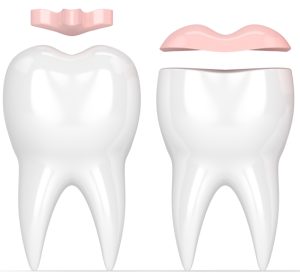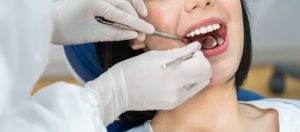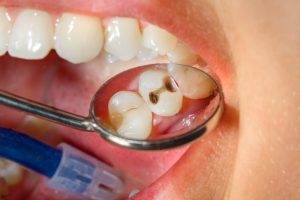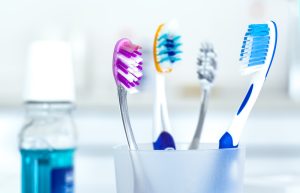Restorative & Cosmetic Transformation With Inlays & Onlays
Ever wondered if there’s a seamless solution to revive your smile, one that not only restores but enhances with precision? Dental inlays and dental onlays are effective dental restorations offered by Dr. Richard Sigismondi at our West Sayville, NY dental practice. These restorations can elevate your dental experience, blending science and aesthetics for a smile that’s both functional and breathtaking. Say goodbye to compromises and hello to a strong, radiant smile at Dr. Sigismondi’s practice, located in Long Island, NY, by dialing 631-563-1583.
What Are Dental Inlays and Onlays?
Dental inlays and onlays are restorative dental restorations used to repair and restore the structure of teeth after decay or damage. These restorations are custom-made to fit the specific tooth being treated and are typically made of ceramic, porcelain, or gold. The main difference between inlays and onlays lies in their position and coverage.
Dental inlays are used to treat extensive internal damage within the tooth structure, mainly encompassing the chewing surface between the cusps. Because they rest inside the cusps of the tooth, they are also referred to as indirect fillings. Dental onlays are used to treat surface deterioration and cover one or more cusps of the tooth. For this reason, onlays are also known as partial crowns.
Benefits of Dental Inlays & Onlays
Inlays and onlays offer numerous benefits some of which include the following:
- Durability: Made from high-quality materials like porcelain or composite resin, inlays and onlays are stronger than traditional fillings and provide superior support to the tooth, making them less likely to crack or break.
- Cosmetic Appeal: Custom-made to match the color and shape of your natural teeth, inlays and onlays result in a more natural-looking restoration, improving the appearance of your smile and boosting your self-confidence.
- Easy to Care For: Inlays and onlays are easy to clean and maintain, contributing to better overall oral hygiene.
- Preservation of Tooth Structure: Dental inlays and onlays allow your dentist to preserve more of the tooth structure compared to other restorative options, such as crowns.
- Long-Lasting Solution: Since inlays and onlays are cemented to the tooth, they create a tight seal in the damaged area, preventing further damage, infection, or inflammation, and can last for up to 30 years with proper care.
- Improved Durability: Dental inlays and onlays are made of scratch-resistant and long-lasting biocompatible material, making them a reliable solution for oral health issues like dental damage.
Who Qualifies for Dental Inlays and Dental Onlays?
Inlays and onlays are versatile restorative solutions that can be applied to your teeth for many reasons. You may qualify for dental onlays or inlays if any of the following apply to you:
- Extensive Tooth Decay: When traditional fillings may not provide sufficient support for extensive tooth decay, inlays and onlays offer a durable and effective solution to restore the tooth’s structure.
- A Desire for Large Fillings Replacements: In cases where large fillings are deteriorating or no longer effective, inlays and onlays can replace them with a more resilient and long-lasting restoration.
- Fractured or Chipped Teeth: Inlays and onlays are ideal for repairing and strengthening teeth that have experienced fractures or chips. They provide structural support while restoring the tooth to its natural appearance.
- Weak Teeth: Teeth that are weakened due to previous dental work, such as large fillings, or have suffered damage over time can benefit from the protective and strengthening properties of inlays and onlays.
- Dental Damage: Inlays and onlays not only restore the functionality of a damaged tooth but also act as a preventive measure, guarding against further deterioration and potential complications.
- Require an Alternative to Crowns: In some cases where a tooth doesn’t require a full dental crown but needs more support than a traditional filling, inlays and onlays offer a conservative yet effective alternative. Your dentist will be able to remove less tooth structure for an onlay or inlay, helping the tooth maintain its integrity.
The Inlay and Onlay Process
Consultation
Before you’re approved for a new inlay or onlay, you’ll have an initial consultation with Dr. Sigismondi at his West Sayville dental practice. During your initial consultation with Dr. Sigismondi, he will discuss your dental concerns and assess whether an inlay or onlay procedure is the appropriate solution for your specific case. This is an opportunity for you to ask any questions and address any concerns you may have regarding the procedure.
Designing the Inlay or Onlay
Following the consultation, Dr. Sigismondi will design a custom dental inlay, or onlay tailored to fit your tooth. This involves taking impressions and utilizing advanced dental technology to ensure a perfect fit and natural appearance. The design phase is a crucial step in achieving optimal results.
Tooth Preparation
Before placing the inlay or onlay, Dr. Sigismondi will prepare the affected tooth. This process involves removing any decay or damaged tissue and shaping the tooth to accommodate the restoration. The goal is to create a stable foundation for the inlay or onlay, ensuring longevity and functionality.
Inlay or Onlay Placement
Once the tooth is prepared, Dr. Sigismondi will carefully place the custom-designed inlay or onlay. These restorations are bonded securely to the tooth surface, restoring its strength and appearance. The placement process is typically efficient and minimally invasive, contributing to a comfortable experience. Once the restoration is placed, you’ll be free to enjoy your new smile!
Inlay & Onlay Aftercare
Following the placement of your inlay or onlay by Dr. Sigismondi in West Sayville, NY, it’s essential to adhere to proper aftercare practices for optimal healing and longevity of the restoration. Here is a detailed list of aftercare instructions:
- Oral Hygiene: Maintain excellent oral hygiene by brushing your teeth at least twice a day using a soft-bristled toothbrush. Use a fluoride toothpaste to promote enamel strength and prevent decay. Floss daily to remove plaque and debris from between the teeth and around the restoration.
- Avoid Chewing on Hard Objects: Refrain from chewing on hard objects like ice, pens, or fingernails, as this can damage the inlay or onlay.
- Follow a Soft Diet Initially: For the first few days after the procedure, opt for a soft diet to reduce stress on the restoration. Include foods such as yogurt, mashed potatoes, and smoothies.
- Limit Staining Substances: Minimize consumption of staining substances like coffee, tea, and red wine to preserve the appearance of your restoration.
- Regular Dental Check-ups: Schedule and attend regular dental check-ups with Dr. Sigismondi to monitor the condition of the inlay or onlay and address any concerns promptly.
- Use a Mouthguard for Grinding: If you have a habit of teeth grinding or clenching, consider using a custom-made mouth guard to protect your restoration and prevent further damage.
- Promptly Address Discomfort: If you experience any discomfort, or sensitivity, or notice changes in the fit of the restoration, contact Dr. Sigismondi’s office promptly for evaluation and adjustments.
- Avoid Tobacco Products: Refrain from using tobacco products, as they can stain the restoration and negatively impact your overall oral health.
- Stay Hydrated: Maintain adequate hydration to support overall oral health and prevent dry mouth, which can contribute to dental issues.
Frequently Asked Questions
Coverage varies among insurance plans. Your dentist can assist in verifying insurance benefits and providing information on potential out-of-pocket costs. It’s also advisable to check with your insurance provider for specific details.
No special maintenance is required. Regular oral hygiene practices, such as brushing, flossing, and attending dental check-ups, are usually sufficient. Your dentist may recommend specific oral care based on individual cases.
After the initial healing period, you can resume normal eating habits. However, it’s advisable to start with a softer diet initially and gradually reintroduce harder foods to prevent unnecessary stress on the restoration.
Your dentist will assess the extent of the tooth damage during the consultation. Generally, inlays/onlays are recommended for larger cavities where a traditional filling may not provide sufficient support.




